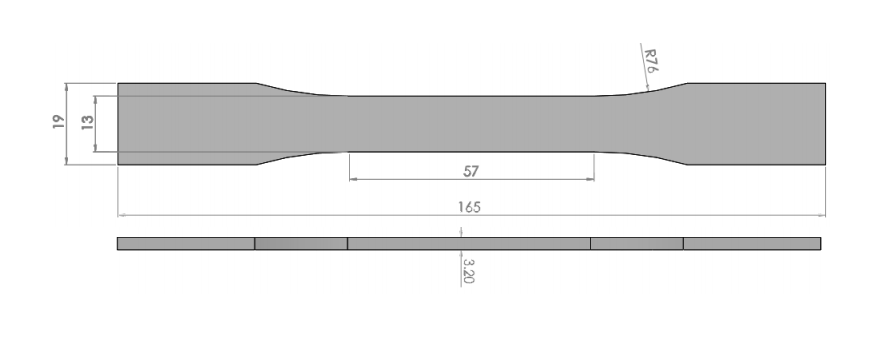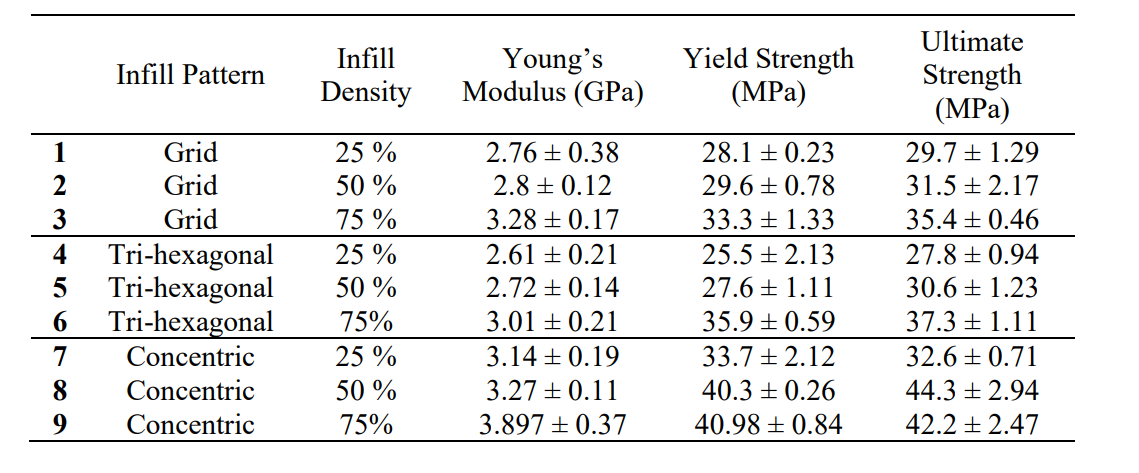3D Printing in Indonesia: Researching PLA Infill Pattern & Density
In the recently published ‘Infill pattern and density effects on the tensile properties of 3D printed PLA material,’ researchers from Indonesia delve further into the details of fabrication with polylactic acid (PLA) material, working with three different infill densities and patterns.
While both acrylonitrile butadiene styrene (ABS) and polylactic acid (PLA) are commonly used in 3D printing, for this study the researchers focused on PLA—often chosen due to affordability, accessibility, and potential for producing innovative, lightweight prototypes and parts. Not only that, because of its plant-based nature, PLA is biodegradable and more environmentally friendly.
Mainly investigating infill density and infill pattern, the research team used tensile tests to reveal material properties, varying parameters to test properties such as tensile strength, yield strength, and ultimate strength.
The following infill densities were chosen:
- 25 percent
- 50 percent
- 75 percent
Three infill patterns were used:
- Grid
- Tri-hexagon
- Concentric
Five samples were used per each combination, resulting in 45 specimens overall. The researchers used 1.75mm PLA, printing melting temperatures of approximately 190°C – 230°C. For 3D printing specimens, the research team used a temperature setting of 210°C.
Infill patterns were printed as follows:
- Grid pattern printing object layers in 90-degree crossing paths
- Tri-hexagonal patterns printing object layers in three path directions, each varying by 120 degrees of the other
- Lowest path angle (in terms of specimen axial axis) of 30 degrees
- Concentric pattern printing in direction of specimen axial axis

Infill patterns: (a) grid, (b) tri-hexagonal, and (c) concentric. Grid pattern infill densities: (d) 25%, (e) 50%, and (f) 75%
Overall, the study showed that as tensile properties increase, the infill density increases—with the exclusion of the concentric pattern at 75 percent infill density.

Stress-strain plots: (a) grid pattern with varied infill densities, (b) 50% infill density with varied infill patterns.
“Based on the result, the highest tensile properties corresponded to concentric pattern with 75% of infill density, where it has 42.2 MPa of ultimate strength, 3.89 GPa of Young’s modulus, and 40.98 MPa of yield strength. In addition, grid pattern with 100% infill density was tested and it was recorded that the Young’s modulus and yield strength were 3.6 GPa and 48.2 MPa, respectively. For 100% infill density, the effect of infill pattern on mechanical properties is negligible,” concluded the researchers.
“The results can be used as reference data for creating finite element model (FEM) and predicting the optimum tensile properties with respect to the selection of the printing parameters. Comprehensive investigation on the effect of infill pattern on the tensile properties is suggested for future study.”
Research continues regarding PLA, from experimenting with composite materials in medical applications to the influence of color, additives like antioxidants, and more.
What do you think of this news? Let us know your thoughts! Join the discussion of this and other 3D printing topics at 3DPrintBoard.com.
[Source / Images: ‘Infill pattern and density effects on the tensile properties of 3D printed PLA material’]Subscribe to Our Email Newsletter
Stay up-to-date on all the latest news from the 3D printing industry and receive information and offers from third party vendors.
Print Services
You May Also Like
New Business: Temporary, Migratory, & Modular 3D Printed Architecture
If we look at potentially emerging 3D printing businesses, then architecture has not been fully explored. Yes, there is a lot of house 3D printing going on worldwide. From deployable...
3D Printing News Briefs, April 19, 2025: Material Extrusion Standard, Metal Powder, & More
In today’s 3D Printing News Briefs, we’re covering a proposed standard for material extrusion, before moving on to business and metal powder. We’ll end with a commercial store’s robotic 3D...
Japan Unveils World’s First 3D Printed Train Station
Japan is now home to what we believe is the world’s first train station built with 3D printing technology. Located in Arida City, just south of Osaka, the new Hatsushima...
restor3d Raises $38M to Expand 3D Printed Orthopedic Implants
Backed by $38 million in new funding, restor3d is pushing ahead with the launch of four personalized implant lines, set to roll out in 2025 and 2026. This latest venture...



























